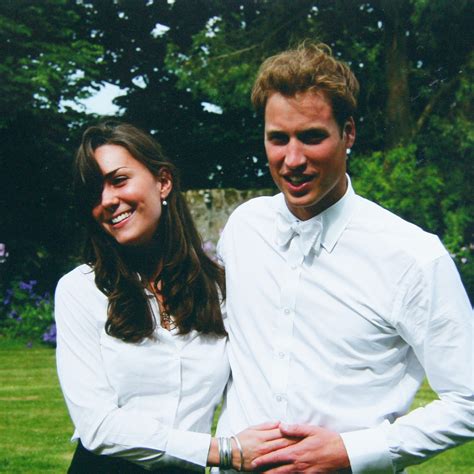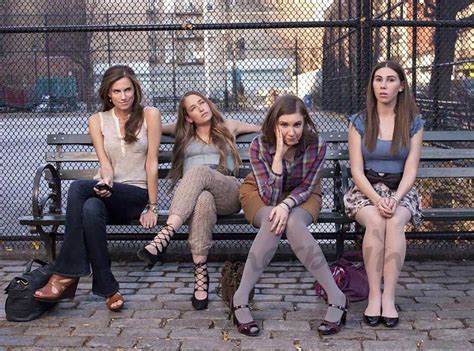
Queen Elizabeth II reportedly harbored initial reservations about Kate Middleton early in her relationship with Prince William, primarily due to concerns about Kate’s lack of a defined career path before their marriage, according to royal expert Katie Nicholl.
Queen Elizabeth II, while ultimately supportive of Prince William’s choice of Kate Middleton as his future wife, initially had reservations stemming from Middleton’s lack of a clear career before marrying into the royal family, according to royal author Katie Nicholl. Nicholl, in her book “The New Royals,” details how the late monarch expressed concern that Kate “didn’t have a job,” contrasting her situation with that of other royal spouses like Sophie Wessex and Princess Diana, who had established careers before their marriages. While the Queen admired Kate’s character and the stability she brought to William’s life, this initial concern reflected a traditional perspective on the role of women in the royal family and the importance of having an independent identity.
The revelation sheds light on the complexities of royal relationships and the expectations placed upon those who marry into the monarchy. While Kate Middleton has since become a beloved and highly respected member of the royal family, known for her dedication to her royal duties and her philanthropic work, this glimpse into the Queen’s initial perspective provides valuable insight into the behind-the-scenes dynamics of the royal household.
Nicholl writes, “Kate was very strategic, and she played the long game. She was always very respectful of the royal system, and what was clever about Kate, and continues to be clever about Kate, is she doesn’t rock the boat.” This approach, while perhaps contributing to the Queen’s initial reservations about her career, ultimately proved to be a key factor in Kate’s successful integration into the royal family.
The Queen’s reported “problem” wasn’t necessarily a personal dislike of Kate, but rather a concern rooted in the historical expectations placed upon royal spouses. Traditionally, royal partners, especially women, were expected to come from aristocratic backgrounds and/or have established professional lives before joining the family. Queen Elizabeth herself ascended to the throne at a young age, having dedicated her life to royal service from the moment she became heir presumptive. Similarly, Prince Philip had a distinguished naval career before becoming the Queen’s consort.
In contrast, Kate Middleton, while from a well-to-do family, had worked in a relatively modest capacity for her parents’ party planning business, Party Pieces, after graduating from St. Andrews University. This lack of a high-profile career, combined with the length of her courtship with Prince William (often referred to in the media as “Waity Katie”), apparently raised concerns within royal circles about her suitability for a life of royal duty.
It’s important to note that the Queen’s concerns were not unique to Kate Middleton. Throughout history, royal marriages have been subject to intense scrutiny, and the backgrounds of potential spouses have always been carefully considered. The pressure on royal partners to conform to tradition, maintain a certain image, and dedicate their lives to public service is immense, and the Queen, as head of the monarchy, felt a responsibility to ensure that anyone marrying into the family was prepared for the challenges ahead.
However, the Queen’s reservations were ultimately overcome by Kate Middleton’s unwavering commitment to William, her dedication to learning the ropes of royal life, and her evident ability to connect with the public. Over the years, Kate has proven herself to be a valuable asset to the royal family, undertaking numerous engagements, supporting important charities, and raising awareness for a variety of causes.
Furthermore, Kate has demonstrated a keen understanding of the role of the modern monarchy, balancing tradition with contemporary sensibilities. She has embraced her position as a role model, using her platform to promote issues such as mental health, early childhood education, and the importance of family.
The evolution of the Queen’s perception of Kate Middleton reflects the changing nature of the monarchy itself. As society evolves, so too must the royal family adapt to remain relevant and connected to the people they serve. Kate Middleton’s journey from “Waity Katie” to the Princess of Wales embodies this evolution, demonstrating that it is possible to uphold tradition while also forging one’s own path within the royal framework.
The story also highlights the immense pressure faced by individuals marrying into the royal family. The scrutiny from the media, the public, and even within the royal household itself can be overwhelming. Kate Middleton’s ability to navigate these challenges with grace and resilience is a testament to her strength of character and her unwavering commitment to her role.
The length of William and Kate’s courtship, while a source of media speculation and even some concern within royal circles, ultimately proved to be beneficial. It allowed Kate to gradually acclimate to the pressures of royal life, to learn about the traditions and protocols of the monarchy, and to develop a strong foundation for her future role as Princess of Wales and, eventually, Queen consort.
Moreover, the couple’s shared experiences at St. Andrews University, where they met and formed a close friendship before embarking on a romantic relationship, provided them with a strong bond that has sustained them through the ups and downs of royal life. Their ability to navigate the pressures of public scrutiny while maintaining a strong and supportive relationship is a key factor in their success as a royal couple.
In conclusion, while Queen Elizabeth II may have initially had some reservations about Kate Middleton’s lack of a defined career, these concerns were ultimately overshadowed by Kate’s dedication, resilience, and commitment to her role within the royal family. The story serves as a reminder of the immense pressure faced by individuals marrying into the monarchy and the evolving nature of the royal institution itself. Kate Middleton’s journey from “Waity Katie” to the Princess of Wales is a testament to her strength of character and her ability to navigate the complexities of royal life with grace and dignity. It also reflects the Queen’s own ability to adapt and recognize the value that Kate brought to the monarchy, solidifying her place as a beloved and respected member of the royal family. The initial “problem” ultimately transformed into a powerful partnership, strengthening the monarchy for future generations.
The report also touches on the dynamic between the late Queen and other royal women, specifically Sophie Wessex and Princess Diana. Sophie, Countess of Wessex, had a successful career in public relations before marrying Prince Edward. Princess Diana, while not having a formal career, came from an aristocratic background and was seen as a suitable match for Prince Charles due to her social standing and connections. The Queen’s comparison of Kate to these women highlights the different expectations placed upon royal spouses at different times and the evolving nature of the monarchy.
Nicholl’s book also delves into the strategies Kate Middleton employed to navigate the complexities of royal life. Her focus on respecting the established royal system and avoiding controversy has been key to her success. This approach, while perhaps initially perceived as a lack of ambition, ultimately proved to be a valuable asset in her integration into the royal family.
The narrative around Kate Middleton has shifted dramatically over the years. Initially portrayed as a commoner who had to wait years for a proposal, she is now widely admired for her grace, elegance, and dedication to her royal duties. Her ability to connect with the public, her commitment to her family, and her tireless work on behalf of various charities have made her one of the most popular members of the royal family.
The Queen’s initial reservations also underscore the challenges of maintaining tradition while adapting to modern times. The monarchy is an institution steeped in history and protocol, but it must also evolve to remain relevant in a rapidly changing world. Kate Middleton’s journey embodies this tension, as she has successfully navigated the complexities of royal life while also bringing a fresh perspective to the role of Princess of Wales.
The story also raises questions about the role of women in the royal family and the expectations placed upon them. While traditionally, royal women were expected to be primarily supportive figures, recent generations have taken on more prominent roles, advocating for important causes and using their platforms to make a difference in the world. Kate Middleton is a prime example of this evolution, using her position to champion issues such as mental health and early childhood education.
Furthermore, the Queen’s reported concerns about Kate’s career highlight the importance of having a sense of purpose and identity outside of one’s relationship. While Kate has fully embraced her role as Princess of Wales, she has also maintained a strong sense of self, pursuing her own interests and passions and using her platform to make a positive impact.
The relationship between Queen Elizabeth II and Kate Middleton ultimately evolved into one of mutual respect and affection. The Queen recognized Kate’s dedication to William, her commitment to her royal duties, and her ability to connect with the public. In turn, Kate demonstrated her respect for the Queen’s wisdom and experience, learning from her example and embracing the responsibilities of her role.
The story of Queen Elizabeth’s initial reservations about Kate Middleton is a reminder that even within the seemingly perfect world of royalty, there are complexities, challenges, and evolving expectations. It is a story of adaptation, resilience, and the enduring power of love and commitment. It also serves as a valuable lesson in the importance of judging individuals based on their character and actions, rather than on preconceived notions or traditional expectations. Kate Middleton has proven herself to be a worthy addition to the royal family, and her journey from “Waity Katie” to Princess of Wales is an inspiring story of perseverance and dedication.
The long courtship period also provided ample opportunity for the public to become acquainted with Kate. This gradual introduction allowed her to slowly acclimate to the intense media scrutiny and public attention that comes with being a member of the royal family. It also allowed the public to form their own opinions of her, independent of the royal family’s initial perceptions.
The media’s portrayal of Kate Middleton has also played a significant role in shaping public perception. Initially, she was often portrayed as a “commoner” who was lucky to be dating a prince. However, over time, the media has increasingly recognized her intelligence, her grace, and her commitment to her royal duties. This shift in media coverage has undoubtedly contributed to her growing popularity and the public’s acceptance of her as a future Queen consort.
The influence of Prince William should not be overlooked. His unwavering support for Kate and his determination to marry her despite any initial reservations within the royal family played a crucial role in their successful partnership. His belief in her abilities and his willingness to challenge traditional expectations ultimately paved the way for her to become a valued member of the royal family.
The current King Charles’ views would have also been influential. As William’s father, his acceptance of Kate would have been important. While the article focuses on the Queen’s perspective, the broader family dynamic would have contributed to the overall narrative.
The legacy of Princess Diana also casts a shadow over any royal courtship. The intense media scrutiny and the pressures of royal life contributed to the breakdown of Charles and Diana’s marriage. The royal family would have been acutely aware of the need to avoid a similar situation with William and Kate.
The success of Kate Middleton’s integration into the royal family can also be attributed to the support she received from other members of the royal family, particularly Prince William and Prince Harry. Their guidance and encouragement helped her to navigate the complexities of royal life and to find her own voice within the institution.
The story of Queen Elizabeth’s initial reservations about Kate Middleton serves as a reminder that even the most powerful and influential figures in the world are subject to human emotions and biases. It is a story of growth, adaptation, and the enduring power of love and commitment. It is also a story that resonates with people around the world, as it highlights the universal themes of family, tradition, and the pursuit of happiness. Kate Middleton’s journey from “Waity Katie” to Princess of Wales is an inspiring story of perseverance, dedication, and the triumph of the human spirit. The Queen ultimately understood this, embracing Kate as a vital part of the monarchy’s future. The “problem” became a strength.
Frequently Asked Questions (FAQ)
1. What was Queen Elizabeth II’s initial concern about Kate Middleton?
According to royal expert Katie Nicholl, Queen Elizabeth II initially had reservations about Kate Middleton because she “didn’t have a job” before marrying Prince William. The Queen was accustomed to royal spouses having established careers or aristocratic backgrounds before joining the family.
2. How did Kate Middleton address the Queen’s concerns?
Kate Middleton addressed the Queen’s concerns by demonstrating a strategic and respectful approach to royal life. As Katie Nicholl stated, “She was always very respectful of the royal system, and what was clever about Kate, and continues to be clever about Kate, is she doesn’t rock the boat.” Her dedication to learning the ropes, commitment to royal duties, and ability to connect with the public gradually won the Queen over.
3. Did the Queen’s concerns stem from a personal dislike of Kate Middleton?
No, the Queen’s concerns did not stem from a personal dislike of Kate Middleton. They were rooted in historical expectations placed upon royal spouses and a concern about Kate’s lack of a defined career path before her marriage. The Queen admired Kate’s character and the stability she brought to William’s life.
4. How did Kate Middleton’s background differ from other royal spouses like Princess Diana and Sophie Wessex?
Princess Diana came from an aristocratic background, while Sophie Wessex had a successful career in public relations before marrying Prince Edward. Kate Middleton, while from a well-to-do family, worked for her parents’ party planning business, Party Pieces, after graduating from St. Andrews University, lacking the high-profile career or aristocratic lineage of the others.
5. How did the Queen’s perception of Kate Middleton evolve over time?
Over time, the Queen’s perception of Kate Middleton evolved into one of mutual respect and affection. The Queen recognized Kate’s dedication to William, her commitment to her royal duties, and her ability to connect with the public. Kate, in turn, demonstrated her respect for the Queen’s wisdom and experience, embracing the responsibilities of her role. The initial “problem” ultimately transformed into a powerful partnership, strengthening the monarchy for future generations.









